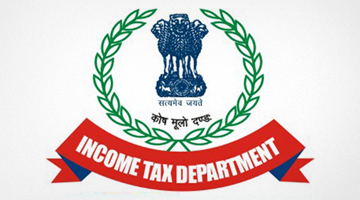TIOL - COB(WEB) - 162
NOVEMBER 19, 2009 By Shailendra Kumar, Editor FOR many of the 'anatomists', the 'First Discussion Paper' on GST, released last week by the Empowered Committee (EC), is a big letdown. The despair emanates largely from the conspicuous absence of the vital 'bones' of the GST-skeleton. No exemption threshold limit, no GST rates and no list of items to be exempted. This has indeed disappointed most experts and also international audiences who have been hoping against the hope that India is destined to swing its way to the new orbit of GST by April 1, 2010. However, even a die-hard optimist now tends to believe that the deadline stands deferred by at least a year like the Direct Taxes Code (DTC). One may feel tempted to blame the States if one reads the speech of State Finance Ministers delivered on the 'White Paper Release Day'! Notwithstanding many of these differences over the vital 'organs' of the GST-anatomy, a lot of spadework has gone into the positive forces which have led to the formal release of the 'White Paper' by the EC. But, in terms of sheer volume and also conceptually, the Union Government has done more intensive and extensive spadework to crystallise their stand on each facet of the new system. For instance, on the issue of exemption threshold limit, the Ministry of Finance has suggested to the EC that there should be a common threshold of Rs 10 lakh for goods and services both for both the SGST as well as CGST. However, such a threshold would not be available to dealers and service providers who are into the business of inter-state supplies. To handle the politically-sensitive issue of small-time dealers, the North Block has suggested that an innovative Compounding Scheme can be put in place. The key features of this Scheme can be, ++ Registration by a Single Agency both SGST and CGST; ++ No physical verification of their premises; ++ E-filing of longer duration returns through certified service centres / Chartered Accountants; ++ Bare minimum audit based on risk assessment, and ++ Soft penal provisions. The Centre is also of the view that the administration of the Compounding Scheme for both the CGST and SGST, could be handed over to the States. Then the floor rate of 0.5% for a turnover limit of Rs 50 lakh would be only for the SGST. GST Rate On this issue, the MoF has clearly communicated to the EC that there should be a single rate of CGST both for goods as well as services. It fears a two-rate system for goods may import serious distortions in the GST system. Some of them could be, ++ A dual rate structure for goods may give rise to demand for two rates for services as well; ++ Possibility of inverted duty structure - raw materials attracting higher rates and end-product lower rate; ++ Inversions would necessarily result in silos of input credit accumulation and the demand for periodic refund, and ++ Overall, such a system would mean that the distinction between the goods and services would continue against the avowed goal of a merged entity called GST. Another area of major difference is the proposed levy of SGST on imports. The EC proposes constitutional amendment to achieve the same. The Discussion Paper advocates that both CGST and SGST would be levied on import of goods as well as services into the country, and full credit would be available for the same. However, the MoF and legal pundits differ on the simple count that it is simply 'exotically absurd' to empower the States to levy a tax beyond their territorial jurisdictions. The emerging view is that it can be levied only through a Central legislation either as a customs duty or along the lines of IGST. However, the final view continues to elude the negotiators on this count. Let's now go to an interesting suggestion made by the EC in the 'White Paper'. Keen netizens may have noticed that the EC proposes to allot PAN-linked (mind it, it's not PAN-based) taxpayer identification number to each taxpayer. States at present follow TIN-based registration number which is different in different states. If such a system of registration is adopted, each CGST assessee would be required to be allotted TIN-based number. Although the PAN no of the assessee from this 13-15 digit number can be culled out but it defeats the basic rationale of hormonisation of business processes. When such a radical reform is being aimed at the indirect taxes which also help create vital economic data at the ground-level of manufacturing, it is important that the registration number should be the one which may also benefit the Direct Taxes Administration in making their 360 degree profiling tools more efficacious. True, taxing inter-state transactions is going to be the most unique and treacherous terrain of the new system. Although many vital 'bones' for this new system called IGST have also been sculpted, conceptually, but more internal debates are required to fill the possible cavities in the entire IGST-anatomy. TIOL intends to discuss and bring the details of this improvised tax system in the coming weeks when it further gets firmed up, and also earns the nod of the EC. Let's hope the coming days may bring better news to restore the fractured hope for a common, unified and barrier-free market India is destined to be! |









 Download PDF
Download PDF



